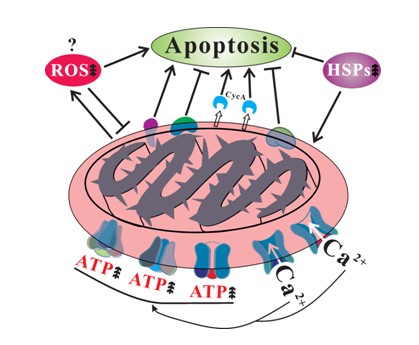植物生理生态所证实真菌退化表现为细胞凋亡特征
中科院上海生命科学研究院植物生理生态研究所对正常菌株与退化菌株的线粒体蛋白质组进行比较分析,揭示真菌菌种退化的分子机理。为真菌菌种退化的预防监测提高了参加指标。 相关文章发表于2013年12月17日的《Molecular & Cellular Proteomics》杂志上。

植物生理生态所证实真菌退化表现为细胞凋亡特征
包括不同食药用真菌在内的丝状真菌在继代培养过程中会发生高频率的菌种退化现象,不同经济性关如产孢、有性生殖、子实体形成及次级产物合成能力下降或丧失,往往造成严重的经济损失。真菌这种高频率、自发退化现象形成的机理仍不清楚。
中科院上海生命科学研究院植物生理生态研究所王成树研究组前期研究表明真菌退化与培养基营养水平相关,退化菌种细胞富含高水平活性氧、mtDNA发生糖基化修饰等。
在此基础上,博士研究生李琳等以模式真菌——构巢曲霉为对象,开展了正常菌株与退化菌株的线粒体蛋白质组比较分析,结合不同生化试验证明真菌退化表现为细胞凋亡的特征,包括线粒体呼吸能力提高、细胞色素c释放、钙离子浓度升高及凋亡诱导因子的高表达等,但退化菌株同时上调表达抗逆蛋白、抗凋亡因子及提高DNA修复能力等,因而短期内没有表现出细胞死亡现象。
这项研究为真菌菌种退化的预防监测提高了参加指标。此项研究获得国家自然科学基金及中科院项目的资助。
原文摘要:
Linkage of oxidative stress and mitochondrial dysfunctions to spontaneous culture degeneration inAspergillus nidulans
Lin Li, Xiao Hu, Yongliang Xia, Guohua Xiao, Peng Zheng andChengshu Wang
Filamentous fungi including mushrooms frequently and spontaneously degenerate during subsequent culture maintenance on artificial media, which shows the loss or reduction abilities of asexual sporulation, sexuality, fruiting and production of secondary metabolites, thus leading to economic losses during mass production. To better understand the underlying mechanisms of fungal degeneration, the model fungus Aspergillus nidulans was employed in this study for comprehensive analyses. First, linkage of oxidative stress to culture degeneration was evident in A. nidulans. Taken together with the verifications of cell biology and biochemical data, a comparative mitochondrial proteome analysis revealed that, unlike the healthy wild type, a spontaneous fluffy sector culture ofA. nidulans demonstrated the characteristics of mitochondrial dysfunctions. Relative to the wild type, the features of cytochrome c release, calcium overload and up-regulation of apoptosis inducing factors evident in sector mitochondria suggested a linkage of fungal degeneration to cell apoptosis. However, the sector culture could still be maintained for generations without the signs of growth arrest. Up-regulation of the heat shock protein chaperones, anti-apoptotic factors and DNA repair proteins in the sector could account for the compromise in cell death. The results of this study not only shed new lights on the mechanisms of spontaneous degeneration of fungal cultures but will also provide alternative biomarkers to monitor fungal culture degeneration.

